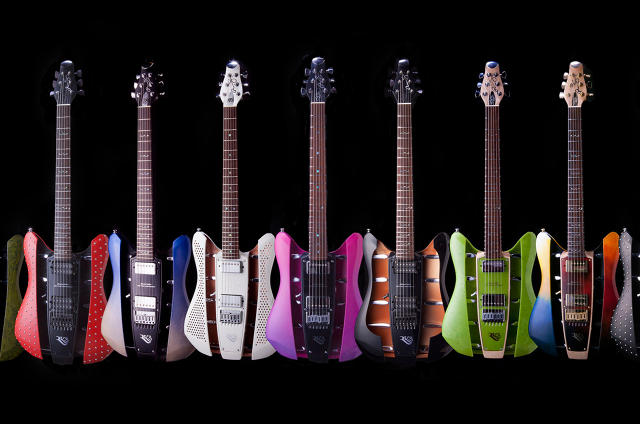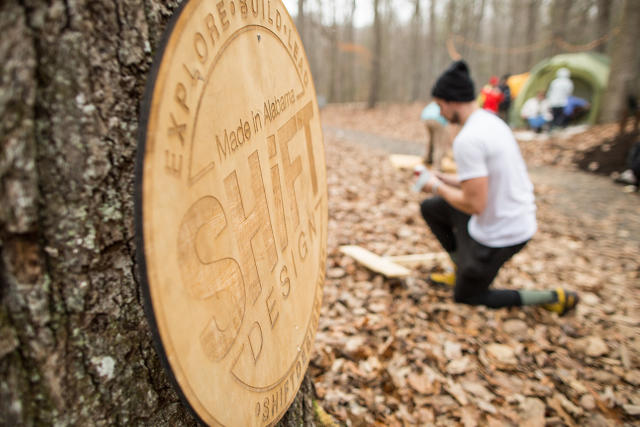the way Designers pick supplies Is damaged–And This Lab needs to repair It
From cellulose guitars to form-shifting walls, Eastman Innovation Lab needs to introduce designers to rising subject matter science.
January 14, 2016
developments in industrial design are inextricably linked to subject matter science. As designers search for how you can manufacture products that perform higher and last longer, materials continuously supply an answer. however introducing designers to those new materials is harder than it sounds.
“There’s just one semester of subject material schooling happening within the collegiate setting,” says Farrell Calabrese, creative supervisor at the Eastman Innovation Lab, a small group of engineers throughout the giant Eastman Chemical firm. “It’s little or no and it’s very common. various the exchange in the ultimate 60 years has been exponential and it’s overwhelming.” Calabrese’s purpose is to assist designers apply the newest subject material research to the very important heart floor between ideation and execution.

George Eastman—of Eastman Kodak repute—based the Tennessee Eastman in 1920 after World warfare I disrupted his supply of supplies for Kodak. while its first products had been for the images business, the chemical compounds had been additionally an effective synthetic-rubber stabilizer and have been used in the 2nd World war. via the Forties, the company’s largest product was once acetate yarn—and it was once even tapped to produce explosives and boost the atomic bomb. Polyester changed into a leading product in the Seventies, and in 1994, Eastman Kodak spun its chemical division off into its own industry, The Eastman Chemical company. whereas Kodak failed to fare well, Eastman was once after the shakeup.
This prior fall, the lab relaunched with a new way to exhibiting designers what Eastman’s chemical engineers are developing. Led by means of Calabrese, who has a heritage in graphic design and model communique and is a member of the Industrial Designers Society of the us, the lab is specializing in telling the fascinating stories behind its most a hit collaborations—from pint glasses to packaging for Bluetooth headsets.

as an instance, a number of years in the past Yves Behar got here to Eastman with an enchanting challenge: He wished to cut back the amount of packaging for the new Jawbone Icon—without changing the actual packaging design. Eastman’s solution was once a subject matter called Eastar copolyester, a clear plastic that offers a high strength and durability ratio to the amount of subject matter used. The packaging mimics a museum vitrine, with the Bluetooth headset mounted underneath a clear case that permits clients to look the product in 360 levels. by switching to this plastic from polycarbonate—the original material—Behar and his staff were able to reduce the quantity of plastic utilized by 68%.
The lab has accomplished the identical for various other corporations, too. It helped to strengthen an unbreakable pint glass for a British brewery and made the Topo flask with the Portland design studio Ziba the usage of a subject matter referred to as Tritan, a BPA-free copolyester that offers the load and clarity of glass but with out the fragility. It additionally worked with a disaster-relief firm to create vessels that purify water the usage of one of those cellulose, which allows forward osmosis to occur.
but sooner than the web page’s relaunch, these stories weren’t well known. The problem is getting the phrase out about distinctiveness supplies and how their features—like Tritan’s versatility to be used in clinical and meals-protected products—can lead to better design. Calabrese hopes that via sharing case research of how the lab problem-solved thru material engineering, they would possibly be capable of collaborate with extra designers and companies that need to exchange up what they make.
“The design community knew who had been are but not from a subject material useful resource standpoint,” Calabrese says. “We reached out to them to try and have in mind what do they need from a supplies provider. They stated, you’re no longer in reality connecting all the dots for us. Why are one of the crucial materials being chosen? How are these choices being made? What are probably the most advantages? With the redesign, we took quite a lot of that under consideration.”

Calabrese also discovered that while designers knew Eastman for its plastic, they failed to be aware of as a lot about the other merchandise, like its Tenite cellulose, which is created from renewable woods, is naturally heat to the touch, and will also be easily bent.
Tenite turned out to be top for the design consultancy RKS Design, which used to be at work on a new kind of guitar made from sustainable supplies. unique woods, like Brazilian rosewood, are prized for musical instrument development, but over-foresting has caused them to change into endangered. by way of the use of Tenite—which has been round for decades—RKS used to be able to provide a beautiful guitar without tropical hardwood. Calabrese created a database of Eastman’s supplies that give an explanation for what they do, their traits, and the way they can be used in the manufacturing process.
“The supplies library is truly the heartbeat of the website,” Calabrese says. “you could go there as touchdown level and notice quite a lot of tales which can be associated with the material. We still need the web site to be an inspiration to the design neighborhood, however we also want to provide much more technical solutions with out it being your standard material safety knowledge sheet.”

The lab additionally wants to collaborate on model-new varieties of materials—showcasing that it could possibly make new merchandise according to a fashion designer’s vision. as an instance, the crew recently collaborated with the Seattle architecture firm MG2 on concepts for the way forward for the place of work. One design used to be a wall machine referred to as MIMIC, a digitally-connected, shape-moving, color-changing wall that provides privateness and acoustic dampening.
The machine (which is purely conceptual at this point) consists of Eastman’s Saflex—an intermaterial layer with sound absorbing traits—and Vanceva—a fade-resistant subject matter that comes in three,000 colors that allow gentle to shine thru. (Daniel Buren used Vanceva, which is typically sandwiched between two panes of glass, in a prismatic set up in France.) used in live performance, the 2 materials would let MIMIC open, close, and alter colours in reaction to the decibel degree of an administrative center, as this video concerning the challenge depicts.
“We wanted to do convey capabilities of our Saflex product and MG2 was once also seeking to exhibit totally different capabilities in excited about the place of work of the future,” Calabrese says. “while we had been on this co-innovation stage, we have been hoping to bring one thing tangible to existence and have a true prototype, however the place it ended up was once a digital prototype. It helped us connect the product in a way we hadn’t done earlier than.”

Calabrese points out that subject matter science is incessantly imprecise for designers. “Eastman makes better-finish, more specialised supplies so students aren’t learning about our supplies of their textbooks; they’re most definitely finding out about plastics at an awfully excessive stage or wooden or glass,” she says. “We simply need to be a useful resource for the community, now not essentially only for use of Eastman products. when you have a subject matter question, Google isn’t the situation which you could go to seek out answers really easily. The Innovation Lab is trying to be the link [to answers].” The Innovation Lab also hosts pupil workshops like SHIFT, and offers can provide to organizations just like the Woods gap Oceanographic institution, which is creating a buoy for knowledge collection in remote areas of the ocean.
“one of the issues that i feel in reality hooked in to is making sure people are using the fitting materials for the article they want to make,” Calabrese says. “We hear a lot about frustration—designers provide you with this pretty concept and these capabilities then they offer it to the engineer and the engineer says we are able to’t do this. So for us, it’s how can we push the envelope from our personal standpoint. Get the precise material and your design might come to fruition easier in the production course of.”
quick company , learn Full Story
(37)














